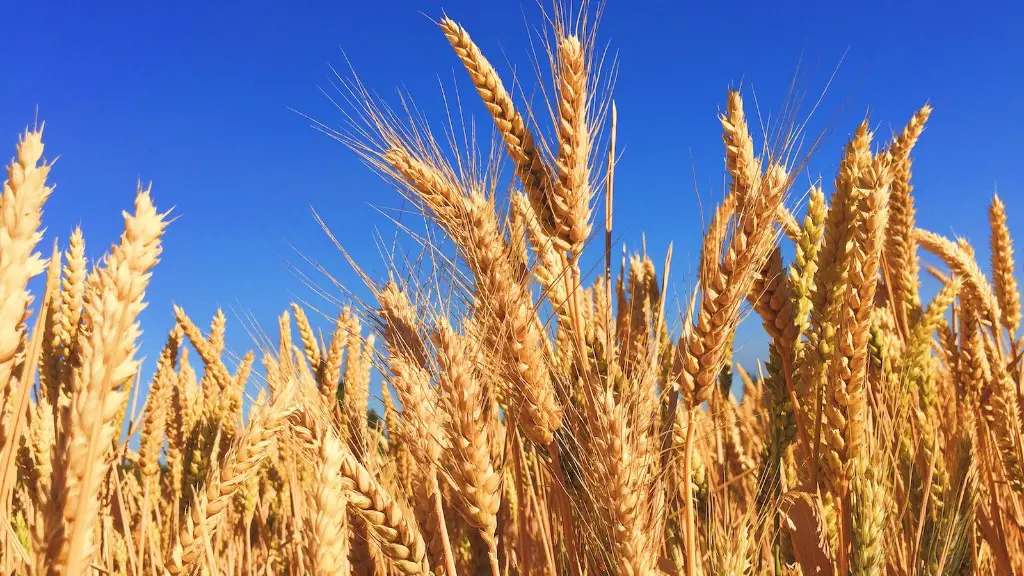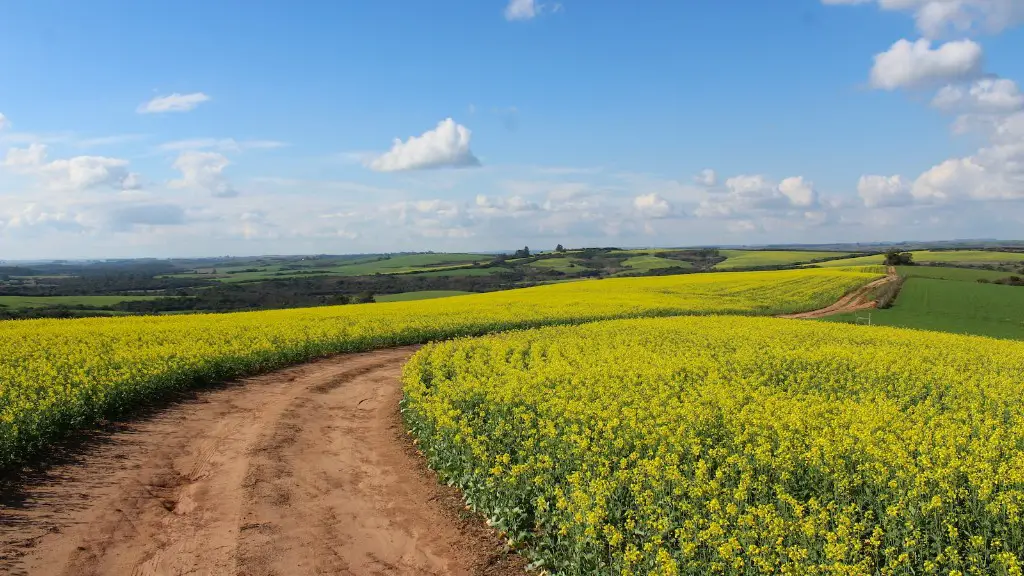Agriculture is one of the main contributors to greenhouse gas emissions worldwide. In fact, it is responsible for around 24 percent of global greenhouse gas emissions. This percentage has increased steadily over the past few decades and is expected to continue to grow as population and demand for food increases. The most significant sources of these greenhouse gases are methane, nitrous oxide, and carbon dioxide.
Methane is generated by livestock and paddy rice fields, while nitrous oxide and carbon dioxide both come from fertilizer application, crop and pasture burning, and soil management. Methane is often produced through the breakdown of organic matter in food production systems and the release of nitrous oxide during the denitrification of nitrogen fertilizer. Meanwhile, carbon dioxide is produced in the burning of crop residues and biomass for energy.
The destruction of forests for agriculture is also another major contributor to the production of greenhouse gases. It is estimated that deforestation accounts for around 18 percent of all emissions from human activities, with much of this coming from the conversion of forests to cropland or pasture. The destruction of peatlands and other wetlands also contributes significantly to global emissions, releasing stored carbon into the atmosphere.
It is clear that agriculture has, and will continue to be, a major contributor to the emissions of greenhouse gases. To reduce this impact, practices such as sustainable farming, efficient fertilizer and water use, establishing protected areas, and reducing deforestation must be adopted. Additionally, technologies that capture and store carbon should be further developed, and applied on a large-scale.
Finally, reducing the level of meat consumption in diets is an effective measure to reduce pressure on land and lower methane emissions. This could have a huge impact on global food production, with shifts to diets that rely more heavily on plant-based sources of protein and other food staples.
Prevention of Emissions
Reducing emissions from agriculture requires changes in production and management practices. This includes adopting practices that improve the efficiency of inputs, such as fertilizer and water, minimizing losses and emissions through more efficient harvesting and distribution systems, and diverting emissions through processes such as composting and anaerobic digestion.
It is also important to shift to more sustainable land use practices. This includes reforestation and afforestation to absorb carbon, and protecting existing forests from destruction and degradation. Enhancing soil fertility and water management is also necessary in order to increase crop yield and reduce the amount of land needed for agriculture.
The use of renewable energy sources can also help reduce emissions. For example, incorporating biomass and biofuels into farming systems can help reduce the need for fossil fuels in production. Likewise, wind and solar energy can be used to power farming equipment, such as irrigation systems.
Finally, technologies that capture and store carbon should be further investigated as a potential way of reducing emissions from agriculture. However, more research is needed on the potential impacts and costs before these technologies can be implemented on a wide-scale.
Carbon Credits
Carbon credits are another way of reducing emissions from agriculture. These are a form of financial reward that is given to agricultural producers who invest in new technology, practices, and other activities that reduce their emissions. With these credits, producers can develop long-term plans to reduce their emissions, as well as reap the financial benefits of their efforts.
In addition to providing financial rewards, carbon credits also create a market that incentivizes a shift to more sustainable practices. The structure of the credits ensures that the greatest reductions in emissions occur first, while further reductions require increased effort and thus are rewarded accordingly. This is important, as it creates an incentive for producers to make larger investments in environmental protection, which can subsequently drive further emission reductions.
It is worth noting that carbon credits are not without their drawbacks. Many of these credits are given away for free, preventing a true market from forming, and can thus disincentivize further investment in environmental protection. Additionally, there are concerns with the legitimacy of many of these credits and the potential for fraud or corruption.
Economics of Sustainable Practices
Adopting sustainable practices has economic implications as well. In many cases, investing in green technology and practices can have a much higher upfront cost than conventional methods. This creates a cost barrier to adoption, particularly in countries where the uptake of sustainable practices is not seen as a priority.
One possible way to overcome this obstacle is to make green practices more economically attractive. This can be done through subsidies, tax incentives, and other government-sponsored initiatives. Additionally, carbon credits mentioned earlier also create an economic incentive for producers to invest in sustainability.
Furthermore, collective action by governmental bodies, private companies, and civil society organizations can also influence the economics of sustainability. These bodies can work together to develop and implement public policies, encourage public-private collaboration, create and enforce mandatory regulations, and provide technical support.
Finally, it is also important to note that in the long-run, sustainable practices can yield higher returns and provide better climate security. By investing in sustainable technologies and practices at the outset, producers can take advantage of economies of scale as these approaches become increasingly prevalent.
Education and Awareness
Awareness and education are also important factors in reducing emissions from agriculture. It is important that producers have the knowledge and resources to understand the impacts and implications of their practices, as well as available sources of funding and other support.
Education at the school level is also important in raising awareness of the issues surrounding greenhouse gas emissions and sustainable agriculture. This can take the form of teaching children and young adults in classrooms, through special events and initiatives, and other activities such as curricula and projects. Meanwhile, agricultural organizations and producers can also be given information on best practices and ways to reduce their emissions.
Finally, effective communication and engagement among producers, consumers, and other stakeholders is also essential. This can help to raise awareness and facilitate collaboration between producers and consumers, with the goal of driving changes in production, consumption, and other aspects of society.
International Collaboration
International collaboration is also essential in reducing emissions from agriculture. Many of the world’s major emitters of greenhouse gases are located in developing countries, and so it is important that these countries are given resources and opportunities to reduce emissions. This includes access to technology, resources, and other forms of support, as well as access to markets and economic rewards.
In addition to the resources and opportunities, international collaboration also involves encouraging policy change. This can include targeting subsidies, regulating emissions, and instituting taxes and tariffs. Furthermore, international standards and regulations can help ensure global consistency in terms of emissions, as well as promote harmonization between countries.
At the same time, both developed and developing countries should continue to invest in research and development in the area of climate change mitigation. This should include research into further development of carbon capture technology and other low-carbon technologies, such as renewable energy sources.
Finally, the international community should also take an active role in promoting sustainability. This includes partnering with the private sector to fund research and development, promoting sustainable practices through public education, and cooperating on projects to reduce global emissions.





